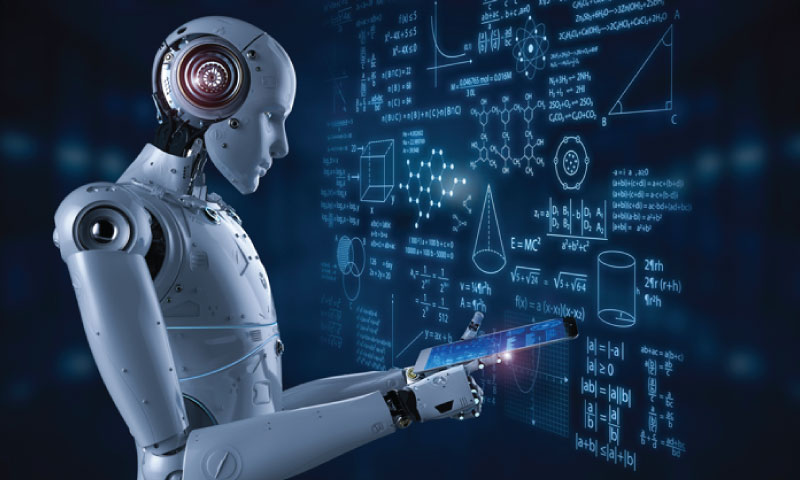
Teaching is one of the most respected professions in the world. However, the digital era introduces new problems and prospects for teachers. This article will attempt to discover how Artificial IntelligenceIntelligence empowers teachers and improves teaching methods in the age of digitization. Educators should adopt AI to bring new life to the classroom. Empowering educators will allow them to offer students customized and efficient education. Artificial IntelligenceIntelligence brings changes into the educational system that completely changes its teaching and learning paradigm.
The perplexities of AI in Education
Many people hold myths about what AI means in education today. Several educators may be apprehensive as they consider the possibility that AI will replace them in classrooms or compromise human interaction. But the fact of the matter is different. Educators can wield a potent weapon in the form of AI, which complements instead of replacing them.
Empowering Educators through Burstiness
Injecting AI in the teachings, burstiness, which is using different words rather than repeating oneself, is important. AI tools must enhance, not substitute, expertise for real educator empowerment. Educators should not use repetitive language patterns and well-used expressions when composing content for teaching or drafting lesson plans. In turn, they must aim to provide new perceptions and unconventional views that will enchant and inspire them.
Educational implications of using artificial IntelligenceIntelligence
The age of digitalization has caught many educators unaware as technology continues its headlong advancement. AI is no mere tool. It can work with huge volumes of data and adapt to any specific learner.
Education and the Rise of Artificial Intelligence
Teachers increasingly become part of the emerging digital era with every technological advance. AI, which can analyze massive amounts of information and tailor instruction for each learner, does not serve merely as an aid; instead, it represents a revolution in teaching and learning.
Breaking the Mold with Personalization
The authentic human touch in information, such as personal experience and subjective opinion, is provided by personal anecdotes and views. Educators build a better link with their students by integrating personal experiences, which make them feel that they are part of their student's lives, thus creating an exciting learning atmosphere. Telling relevant tales provokes curiosity and facilitates active learning.
Teaching and learning extend beyond merely what you teach; it lies in providing a supportive environment for your students surrounding what you teach.
Personalized Learning: Tailoring Education to Individual Needs
Personalized learning experiences are probably one of AI's deepest ways to empower teachers. This is driven by adaptive learning platforms that provide AI-driven analytics about student performance, making it possible for teachers to customize lesson plans around students' strengths and weaknesses. This individualized approach boosts student attention and retention for more deep-seated knowledge.
Enhancing Creativity through Unconventional Approaches
The classroom can, therefore, become a fertile ground for creativity with the advent of AI. When teachers are willing to try new ideas to keep things fresh, they will be able to motivate learners to see education beyond the norms. Using AI-powered tools such as blogs, videos, and presentations helps explore various learning approaches while inculcating individual thinking among learners.
Predictability in AI Integration
Creativity is mandatory while working with AI; teachers should not disregard the necessity for clarity and convention. The content, as well as its delivery, should be predictable in order for students to grasp what is being taught successfully. Through this, educators are expected to use AI to aid learning but not distract learners.
Novelty as an entry point to engagement
Novelty can be introduced into teaching to rejuvenate learning. Using AI-powered tools allows for the presentation of data differently, which could attract students' attention and increase motivation.r Using art intelligence capabilities in lesson designs for learners will make education fun rather than an act of being fed.
Embracing Convention for Information Clarity
However, despite the importance of creativity, teachers ought not to forget that everything concerning AI should always remain unambiguous. Maintaining conventions also helps students to grasp what they learn properly. In order to incorporate AI in education, teachers should place more emphasis on the adoption of language structures and patterns that correspond with normal language and grammar.
Collaboration, not Replacement: AI and the Human Touch The Teacher as Guide
While AI will transform education, no one can replace an educator. However, the "human touch," motivating, and the art of mentorship cannot be automated. With AI-equipped educators, students are led through a digital maze that develops their critical thinking aptitude alongside fostering a desire for knowledge.
Looking Ahead: Artificial Intelligence in the Education Sector. A Harmonious Future
That is how education will be in the future, where AI works with teachers. With advancing technology also comes the changing duties of an educator. The role of the empowered AI is to transform their teachers into architects of transformative learning experiences that will impact the minds of young generations who live in a connected and digital environment.
Conclusion
Artificial IntelligenceIntelligence can revolutionize education by equipping educators with the necessary tools and resources to facilitate better teaching practices. Using AI in education, one can provide a stimulating and individualized learning environment, unleash the imagination of learners, and maintain lucid communication. With time into the digital era, AI in education is a way of helping teachers learn and effectively guide students toward success in the rapidly changing world.
Therefore, we should leverage the benefits offered by AI in education and examine how AI can be used to augment the influence of teachers in a digital era. Together, we can redefine the teaching and learning experiences to be more accessible, interactive, and relevant.